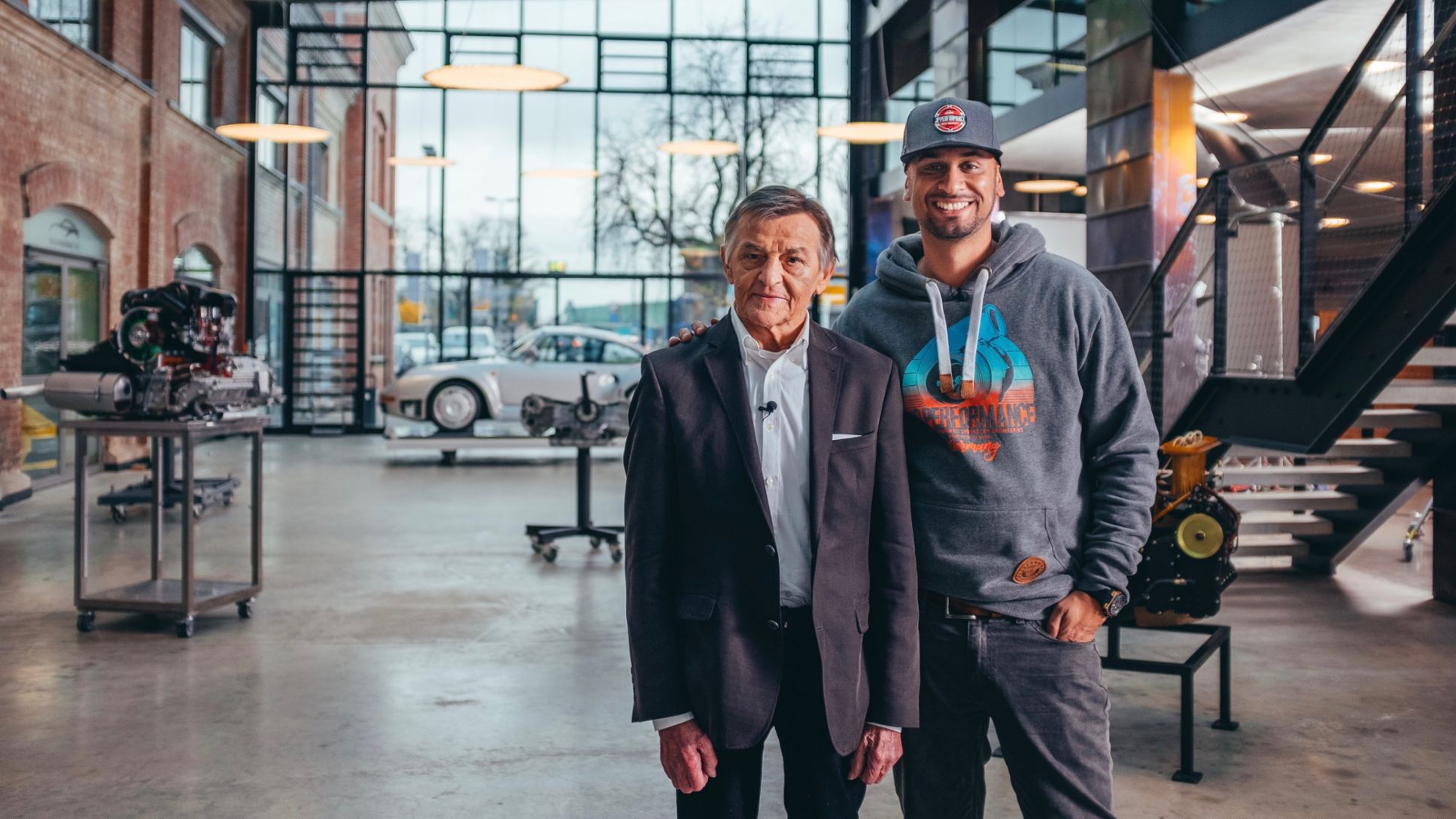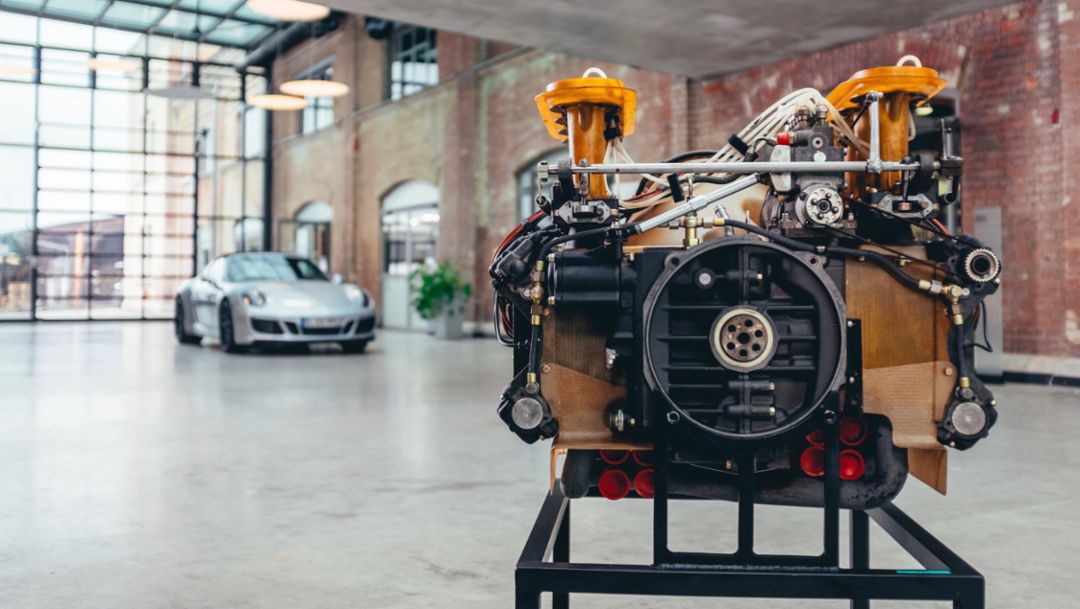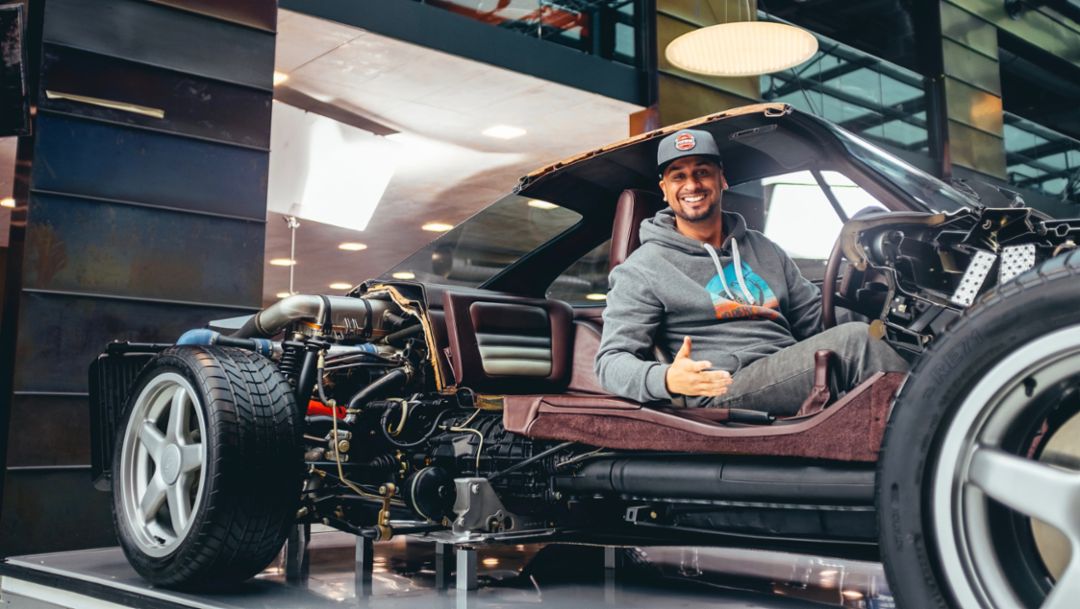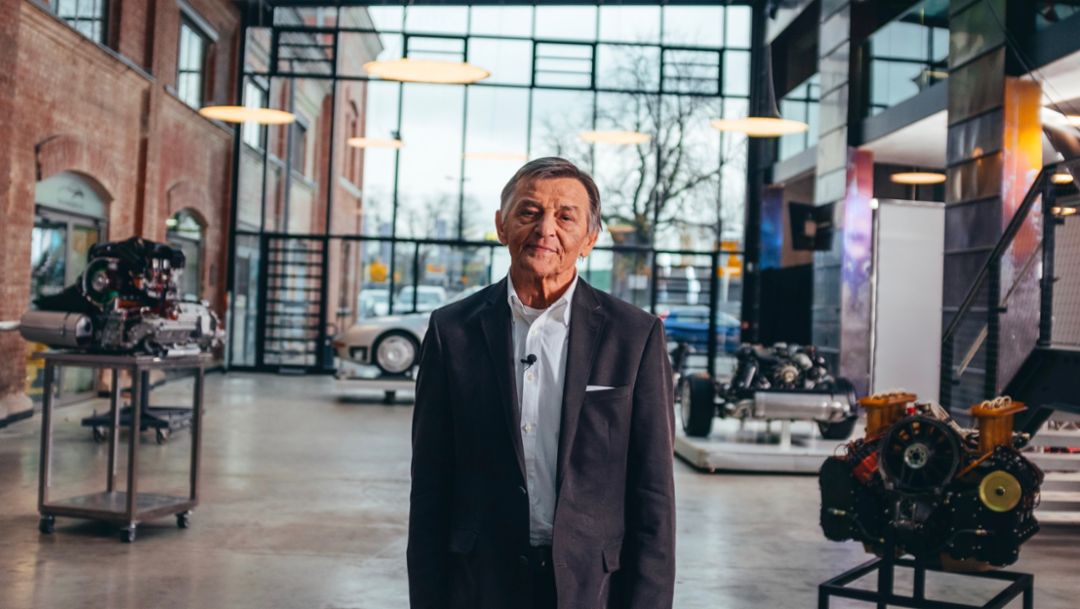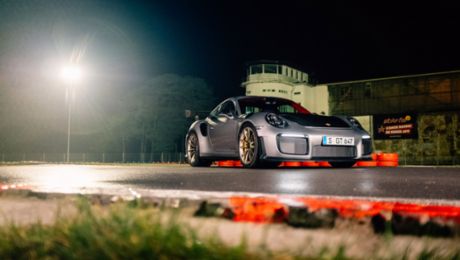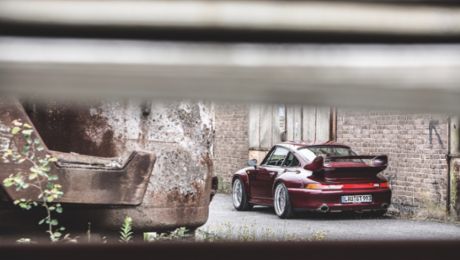Together, they explain what makes that engine the perfect match for a Porsche. Starting with its flat construction, Jean Pierre Kraemer–also known as J.P. Performance–uses a 908 engine to show how compact the boxer engine is. Hans Mezger, under whose leadership that very 908 engine was created, agrees with Jean Pierre, reminiscing about the days of its creation.
Next, they take a look at the responsiveness of the boxer engine. Both quickly agree that turbochargers are a superb invention and are a great addition to the concept of the boxer engine.
On an exposed drivetrain, Jean Pierre Kraemer presents the next item in the top 5: the weight distribution. In his inimitable way, he shows how the rear wheels generate the driving force in a Porsche. The engine and transmission create downward force, which provides a better mechanical grip; one of the reasons why Porsche cars can accelerate so quickly out of the corner.
The guys then present the penultimate topic featured in the Top 5 using a crankshaft model: thanks to the mass balancing in a boxer engine, there is no need for a balance shaft working with momentum. The opposing action of the pistons provides the required energy – and according to Hans Mezger, is what gave the engine its alternative name ‘boxer engine‘.
Finally, number one in this ranking, the vehicle construction method is illustrated on one of the most famous Porsche models: the 959. The cutaway model of the 959 shows how the silhouette of a Porsche 911 is tailor-made for the boxer engine, and vice versa.
At the end of this episode, viewers are treated to some exciting information about the last episode of the second season.
